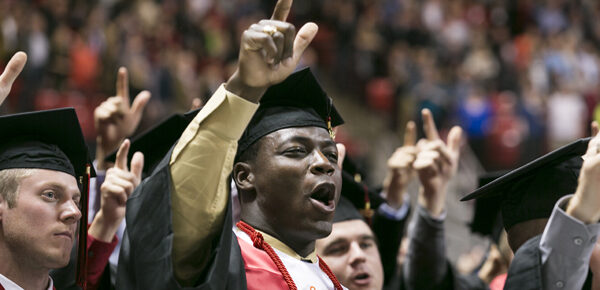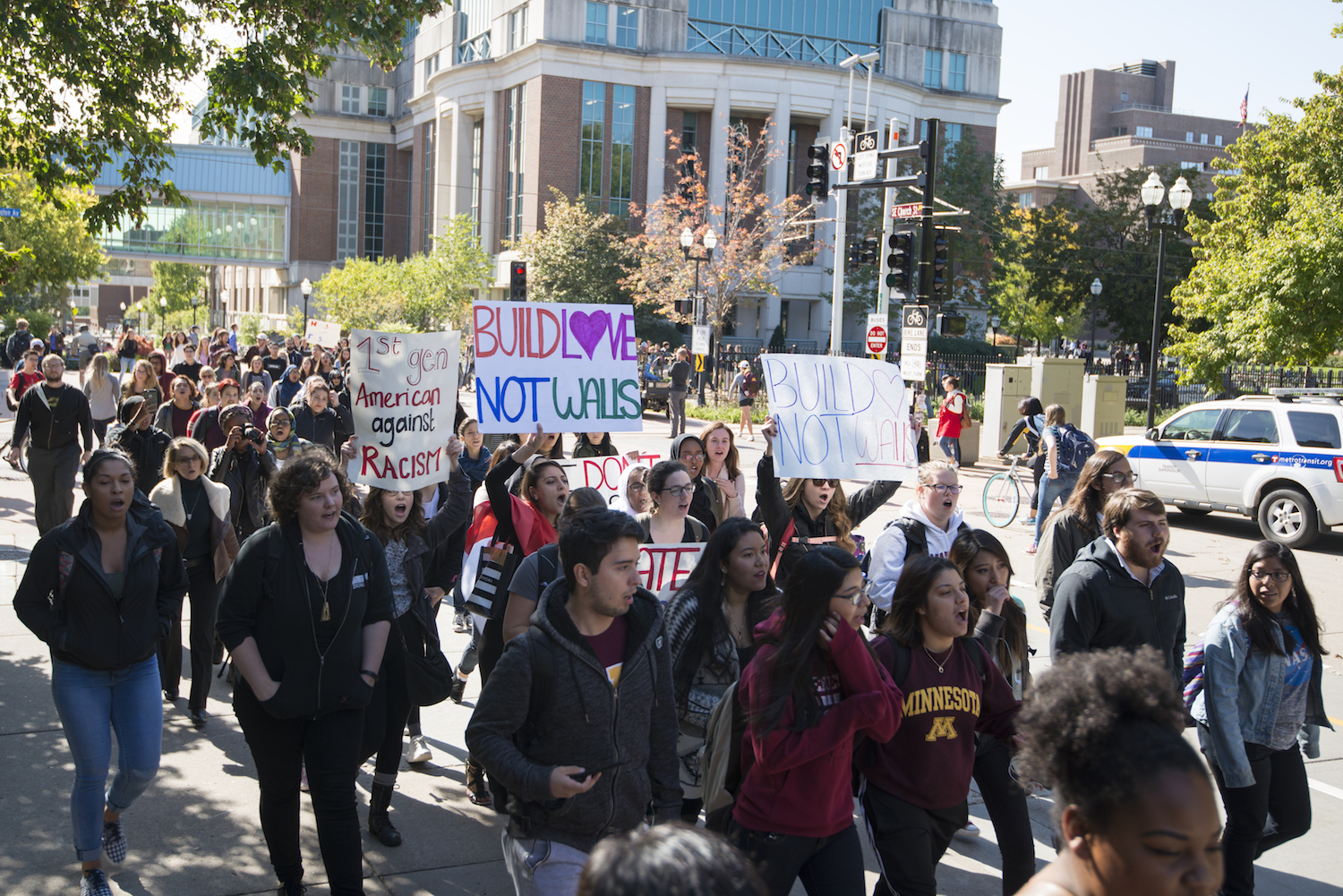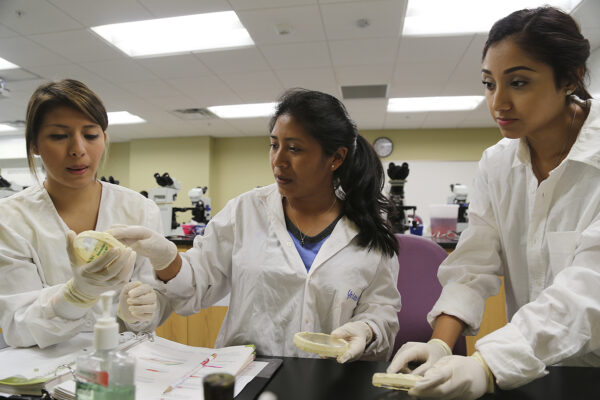Student Activism and Social Change on Campus Before the 1960s
Links between the broader social context of what is happening off campus and students’ on-campus activism have long been a means for students to personalize, contextualize and make sense of what it means to pursue social change. Below are selected examples of these connections from Colonial times through the 1950s. Read more in “Embracing Student Activism” by Cassie Barnhardt and Kimberly Reyes.
Colonial Times
Social Issues
Prevailing political concerns of the time related to having to “obey an unjust sovereign.”
Campus Activism Reflecting Social Issues
Riots in the campus commons, notably Harvard’s Bad Butter Rebellion. Riots escalated into debates with board of overseers about students having their campus life governed by an “unjust sovereign.”
Source: Moore, K. M. (1997). Freedom and Constraint in Eighteenth Century Harvard. In L. F. Goodchild & H. Weschler (Eds.), The History of Higher Education (2nd ed., pp. 108-114). Needham Heights, MA: Simon and Schuster.
Revolutionary Era
Social Issues
National politics included widespread anti-British and anti-Stamp Act sentiments. Students displayed a penchant for deism, atheism and religious indifference, views that countered the traditional theological orientation of most colleges.
Campus Activism Reflecting Social Issues
Multiple commencement protest rallies occurred throughout the colonial colleges; boycotts of British goods. Students hosted mock Lord’s Suppers, burnt Bibles, gathered in secret at night for revolutionary readings and chants, and called for the ouster of college president in favor of one who was freed from religious indoctrination.
Sources: Broadhurst, C. J. (2014). Campus Activism in the 21st Century: A Historical Framing. New Directions for Higher Education, 2014(167), 3-15. doi:10.1002/he.20101; Rudolph, F. (1990). The American College and University: A History. Athens, GA: University of Georgia Press; Rudy, W. (1996). The Campus and a Nation in Crisis: From the American Revolution to Vietnam. Cranbury, NJ: Associated University Presses.
Antebellum Period /Pre-Civil War
Social Issues
Students’ concerns mirrored national issues, either advocating for anti-slavery or state’s rights. During the war itself, students became vocal with their anti-conscription concerns.
Campus Activism Reflecting Social Issues
Sentiments manifested as students focusing on local issues like expressing problems with the university president, problems with the town’s authorities, or having a say in university decision making. Abolitionist and antislavery movement had a presence on campuses with Black students cultivating the cause with campus speeches and periodicals.
Sources: Kendi, I. X. (2012). The Black campus movement: Black students and the racial reconstitution of higher education, 1965-1972. New York: Palgrave Macmillan; Lipset, S. M. (1971). Rebellion in the university. Chicago: The University of Chicago Press; Rudy, W. (1996). The Campus and a Nation in Crisis: From the American Revolution to Vietnam. Cranbury, NJ: Associated University Presses; Wood, J. L. (1974). The Sources of American Student Activism. Lexington, MA: D.C. Heath and Company.
Reconstruction/Early 20th Century
Social Issues
Students desired for more social and cultural freedom, held larger concerns about the plight of the working class. Racial tensions were widespread and growing nationally. The women’s movement gained momentum.
Campus Activism Reflecting Social Issues
Students resisted in loco parentis, where colleges sought to monitor/proscribe the morality and behavior of student. Chapters of the Intercollegiate Socialist Society formed at 70 campuses working to form unions and pursue anti-militarism on campuses. Female students engaged in rallies for suffrage. Groups of white students engaged in racial violence against Black students on campuses. The New Negro Campus Movement focused on securing off-campus civil rights, wrote publications and engaged in strikes; Black students resisted White leadership of HBCUs, including demanding that Black presidents be installed at HBCUs, and they engaged in petitions, strikes, and pushed to assert influence over college control at HBCUs.
Sources: Braungart, R. G., & Braungart, M. M. (1990). Political Generational Themes in the American Student Movements of the 1930s and 1960s. Journal of Political & Military Sociology, 18(1), 79-121; Broadhurst, C. J. (2014). Campus Activism in the 21st Century: A Historical Framing. New Directions for Higher Education, 2014(167), 3-15. doi:10.1002/he.20101; Kendi, I. X. (2012). The Black campus movement: Black students and the racial reconstitution of higher education, 1965-1972. New York: Palgrave Macmillan; Wood, J. L. (1974). The Sources of American Student Activism. Lexington, MA: D.C. Heath and Company.
1930s
Social Issues
Drawing upon the sentiments of the Progressive era, students held concerns about an overly materialistic culture; the threat of fascism and war fostered a larger peace movement. Racial division remained prominent.
Campus Activism Reflecting Social Issues
Students organized into political groups reflecting national concerns/affiliations; staged antiwar rallies, staged walkouts of class, and participated in national peace meetings. Black students pushed for changes at HBCU’s with rallies, strikes, class walkouts and advocacy to oust white paternalistic leaders (in favor of replacing them with Black college presidents) and advocated for fewer social restrictions and more influence over the curriculum.
Sources: Braungart, R. G., & Braungart, M. M. (1990). Political Generational Themes in the American Student Movements of the 1930s and 1960s. Journal of Political & Military Sociology, 18(1), 79-121; Broadhurst, C. J. (2014). Campus Activism in the 21st Century: A Historical Framing. New Directions for Higher Education, 2014(167), 3-15. doi:10.1002/he.20101; Kendi, I. X. (2012). The Black campus movement: Black students and the racial reconstitution of higher education, 1965-1972. New York: Palgrave Macmillan; Laufer, R. S., & Light Jr., D. (1970). The origins and future of university protest. In D. Light Jr. & J. Spiegel (Eds.), The Dynamics of University Protest (pp. 1-22). Chicago: Nelson-Hall.
1940s/1950s
Social Issues
National concerns reflected both a trend towards conservatism associated with the WWII patriotism and the McCarthy era, and national sentiment was highly charged around race, especially desegregation in education.
Campus Activism Reflecting Social Issues
Some students organized local community programs with YMCA and YWCAs. Racial violence by white students directed towards African American students (cross burnings, personal attacks) manifested on campuses; African American students organized and worked to promote desegregation.
Sources: Astin, A. W., Astin, H. S., Bayer, A. E., & Bisconti, A. S. (1997). Overview of the Unrest Era. In L. F. Goodchild & H. Wechsler (Eds.), The History of Higher Education (Second ed., pp. 724-738). Needham Heights, MA: Simon & Schuster; Broadhurst, C. J. (2014). Campus Activism in the 21st Century: A Historical Framing. New Directions for Higher Education, 2014(167), 3-15. doi:10.1002/he.20101; Kendi, I. X. (2012). The Black campus movement: Black students and the racial reconstitution of higher education, 1965-1972. New York: Palgrave Macmillan; Rudy, W. (1996). The Campus and a Nation in Crisis: From the American Revolution to Vietnam. Cranbury, NJ: Associated University Presses.
If you have any questions or comments about this blog post, please contact us.


